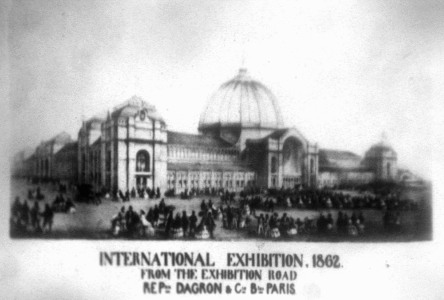The earliest known world philatelic exhibition took place in 1862 in London, England. However, it was not anything like the international exhibition we know today. That came later. Stay Tuned.
The 1862 International Exhibition in London—while not a dedicated philatelic exposition, it holds a fascinating place in postal history and early stamp collecting culture.
🏛️ Overview of the 1862 Exhibition
- Official Name: London International Exhibition of Industry and Art
- Dates: May 1 to November 15, 1862
- Location: South Kensington, London
- Scope: A world’s fair showcasing industrial, artistic, and technological achievements from 36 countries
- Visitors: Over 6 million attendees
📮 Philatelic Relevance
Although the event wasn’t a stamp show per se, it featured:

- Special Postal Markings: Covers mailed from the exhibition bore unique duplex cancellations like “INTERNATIONAL EXHIBITION W./5/JY 28/62 – IE/W,” which are now prized by postal historians
- Publicity Materials: Embossed multicolored cards and silk banners were produced to promote the exhibition, some of which included postal themes
- Cultural Impact: The exhibition helped normalize the idea of collecting postal artifacts, laying groundwork for future philatelic exhibitions
🧭 Historical Context
- Stamp collecting was still in its infancy—Georges Herpin had not yet coined the term “philatelie” (1864)
- The first known stamp club, Société Philatélique de Paris, was not formed until 1865
- The earliest confirmed U.S. stamp society, the New York Stamp Society, was not founded until 1868
While 1862 Exposition didn’t host a formal stamp exhibition, it was a pivotal moment in the convergence of postal innovation, public display, and the budding culture of philately.

